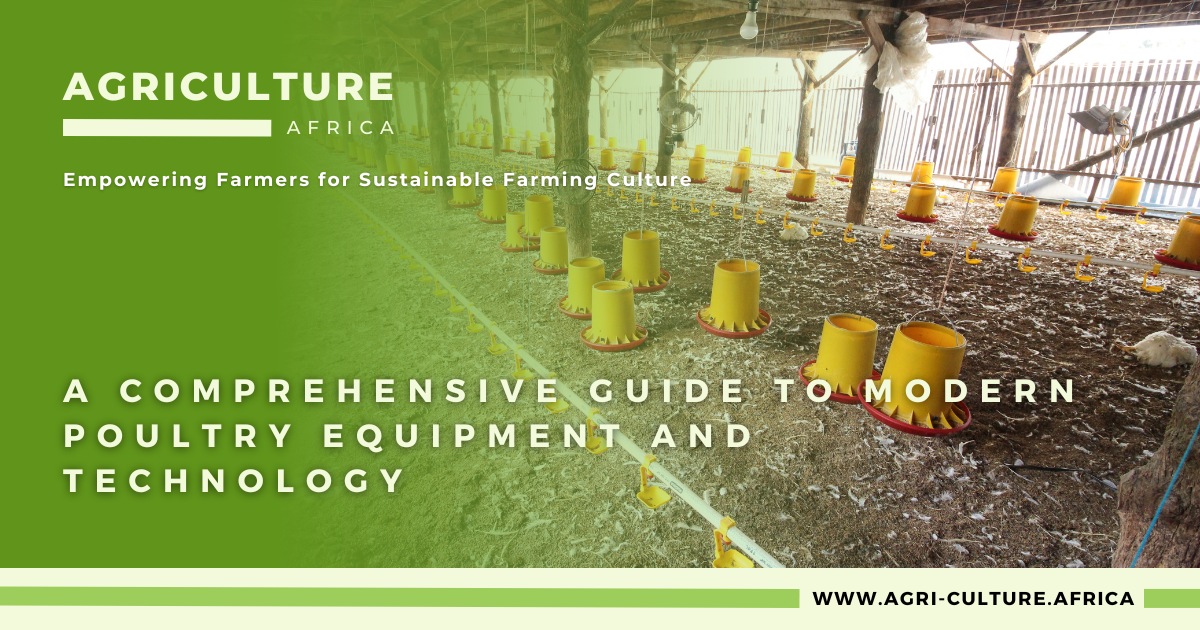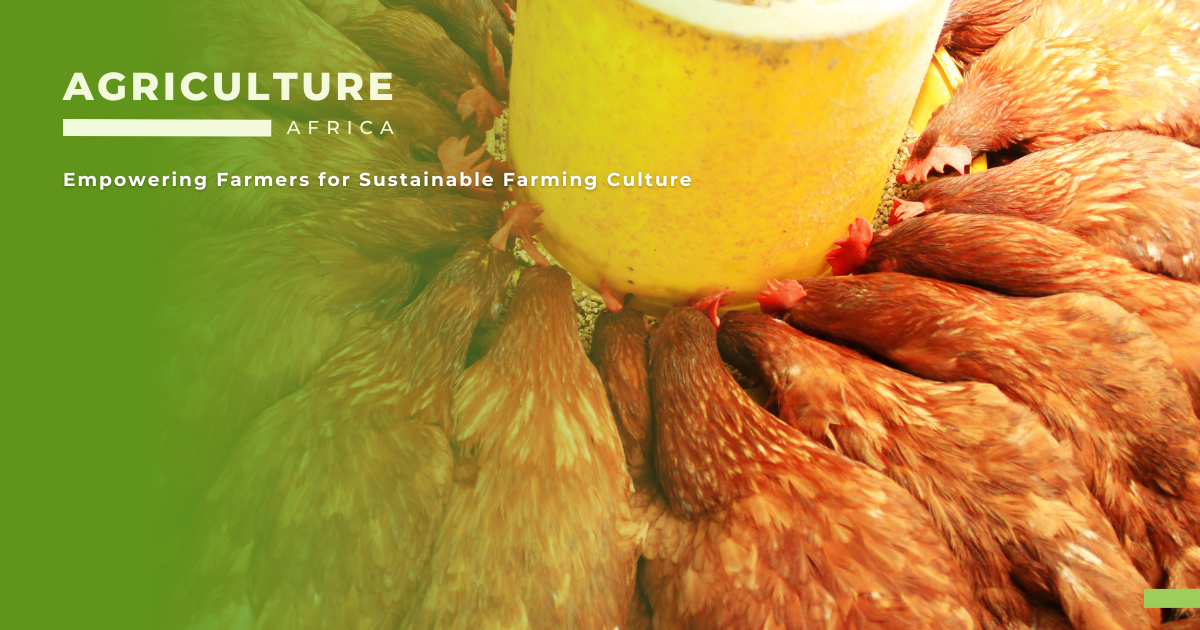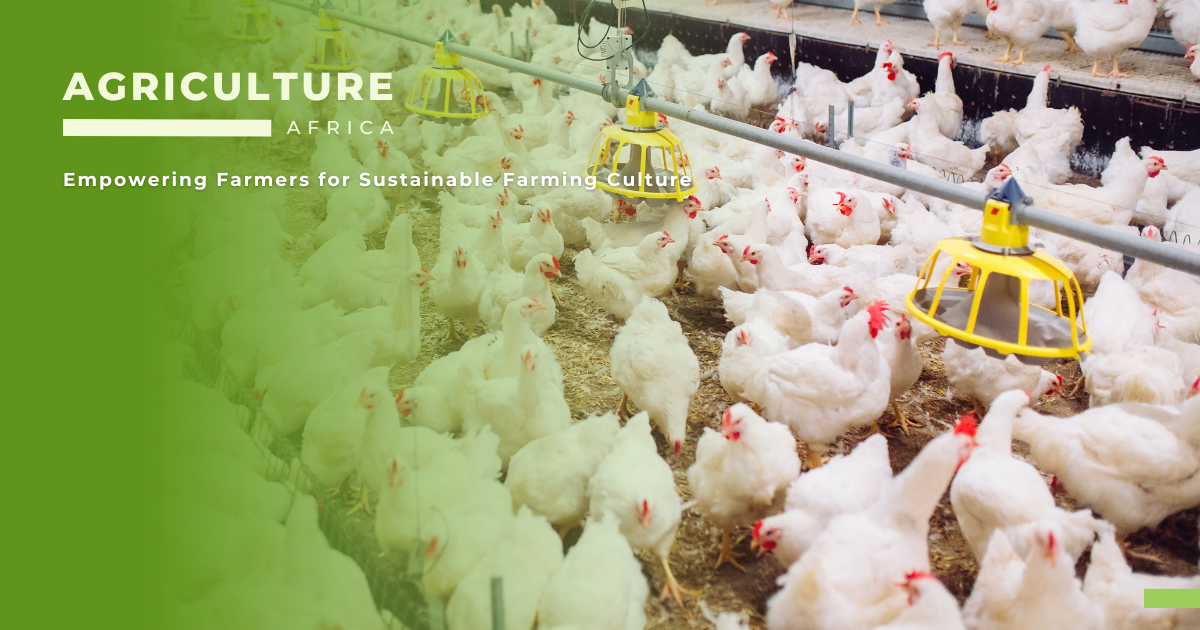
Empowering African Farmers for Sustainable Farming Culture
Poultry farming is a complex process that requires a range of specialized poultry equipment and technology to ensure the health, well-being, and productivity of the birds. With the advancement of technology, modern poultry farming is much different from the traditional methods of rearing chickens in backyard coops. In this article, we will explore the various types of equipment and technology used in modern poultry farming, including automated feeding and watering systems, environmental controls, and monitoring systems.
Modern poultry farming relies heavily on the use of advanced equipment and technology to efficiently raise and manage large flocks of birds. Automated feeding and watering systems, environmental controls, and monitoring systems are just a few examples of the types of equipment and technology used in modern poultry farming.
The use of these technologies offers several benefits for poultry farmers, including reduced labor costs, improved bird health and growth, and increased profitability. Additionally, these technologies can help farmers conserve resources, minimize waste, and reduce the risk of disease transmission.
One of the most critical aspects of poultry farming is feeding the birds. In the past, farmers had to manually feed each bird, which was time-consuming and labor-intensive. Today, automated feeding systems have revolutionized poultry farming by allowing birds to be fed automatically.
These systems typically consist of a series of feed bins, conveyors, and distribution systems that deliver feed to the birds in a controlled and efficient manner. Some systems use computerized controls to regulate the amount and frequency of feed delivery, ensuring that birds receive the proper nutrition at the right time.
Automated feeding systems have several advantages over traditional manual feeding methods. They can reduce labor costs, minimize feed waste, and improve the overall health and growth of the birds. Additionally, these systems can provide more precise control over the feed delivery, which can lead to better weight gain, improved egg production, and higher profits for the farmer.

Water is another essential component of poultry farming, and modern technology has made it possible to efficiently deliver water to large flocks of birds. Automated watering systems use a network of pipes, valves, and drinkers to provide clean water to the birds on a consistent basis.
These systems can be designed to deliver water at specific intervals or on demand, depending on the needs of the birds. They can also be equipped with sensors that detect and alert farmers to low water levels or other potential issues.
Automated watering systems have several benefits for poultry farmers. They can reduce labor costs, improve the health and performance of the birds, and minimize the risk of disease transmission through contaminated water. Additionally, these systems can help farmers conserve water and reduce waste, which can lead to significant cost savings over time.

Poultry farming requires a carefully controlled environment to ensure the health and well-being of the birds. Modern technology has made it possible to automate many of the environmental controls necessary for poultry farming, such as temperature, humidity, and ventilation.
Automated environmental control systems use sensors and computerized controls to monitor and adjust the temperature, humidity, and airflow in the poultry house. This can help maintain optimal conditions for the birds, which can improve their health and growth.
These systems can also help farmers conserve energy and reduce costs by minimizing the need for manual adjustments to the environmental controls. Additionally, they can help mitigate the risk of disease transmission by maintaining a clean and controlled environment.
Monitoring systems are an essential component of modern poultry farming. These systems use sensors and computerized controls to track various parameters, such as temperature, humidity, feed consumption, and water usage.
By monitoring these parameters, farmers can identify potential issues before they become serious problems. For example, if the feed consumption of a particular group of birds suddenly drops, it could indicate a health issue that needs to be addressed.
Monitoring systems can also help farmers optimize their operations by providing valuable data that can be used to improve efficiency and productivity. For example, if a farmer notices that a particular group of birds is not performing as well as others, they can use the data provided by the monitoring system to identify potential causes and make necessary adjustments.
In addition to monitoring systems, many farmers also use data analysis tools to help them make informed decisions about their operations. These tools can help identify trends and patterns that can be used to optimize feed and water usage, reduce waste, and improve overall profitability.
As the poultry industry continues to evolve, we can expect to see even more advanced technologies and equipment being developed to help farmers optimize their operations and improve overall efficiency and productivity. By staying up-to-date with the latest trends and technologies in poultry farming, farmers can ensure that they remain competitive and successful in this dynamic and rapidly evolving industry.

Your donation fuels change! Help Agriculture Culture in Africa empower farmers with resources, training, and access to innovation. Together, we can revolutionize African agriculture.
Empowering Sustainable Growth and Innovation in African Agriculture
Sign up to our newsletter